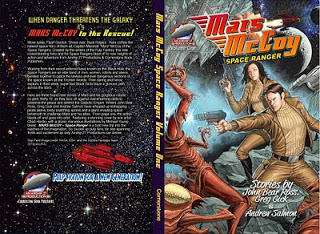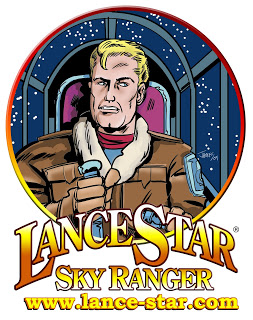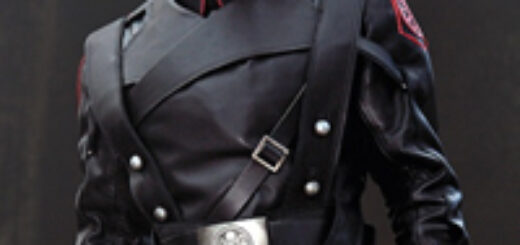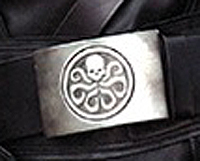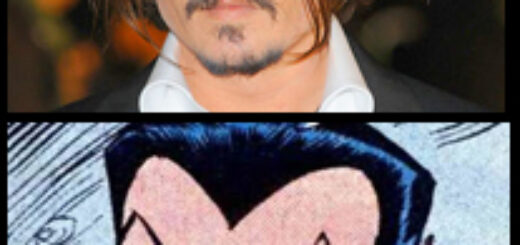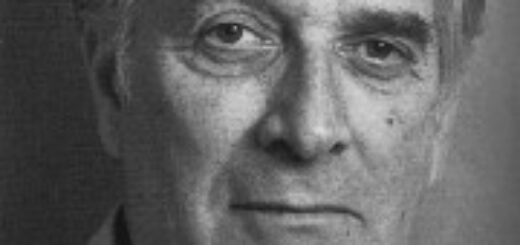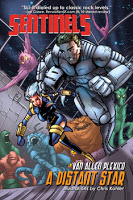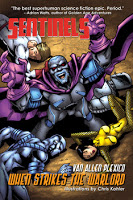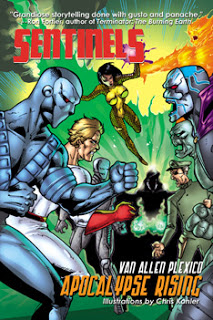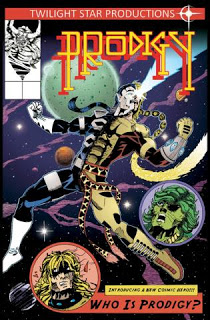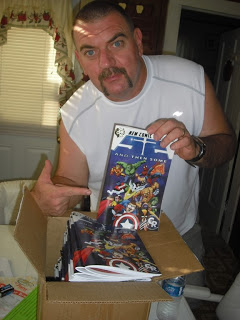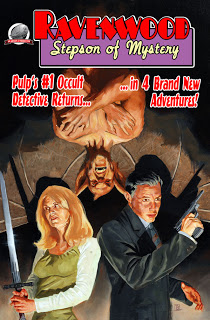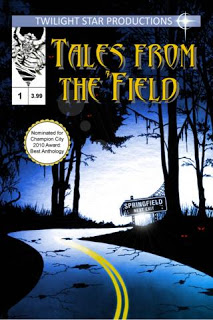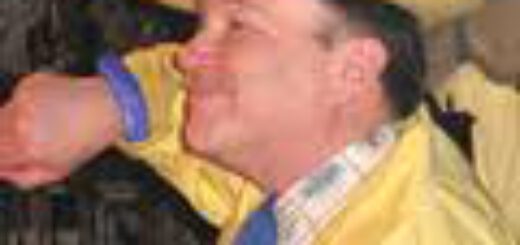Tagged: Avengers
Joss Whedon, James Bond and M on International Women’s Day
This is the first time we’ve had Daniel Craig and Dame Judi Dench as James Bond and M in over two years, going on three… and they’re back together for a good cause, supporting International Women’s Day. Watch:
[youtube]http://www.youtube.com/watch?v=gkp4t5NYzVM[/youtube]
In the spirit of the day, you may want to take a look at this piece as well: Joss Whedon’s acceptance speech to Equality Now, introduced by Meryl Streep.
[youtube]http://www.youtube.com/watch?v=QoEZQfTaaEA[/youtube]
Captain America Movie Red Skull Works For…?
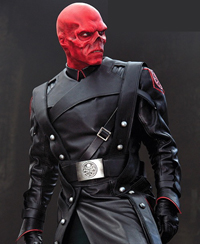 Loyal and even semi-conscious comics fans know that Captain America’s arch-nemesis (love that phrase) the Red Skull was a big-time Nazi in the 1940s. The next decade, he was a Commie, proving you don’t have to be a Republican to conflate the two extreme opposites. In the 1960s – and ever since – he’s worked with (more or less) lots of organizations but was always in it for himself.
Loyal and even semi-conscious comics fans know that Captain America’s arch-nemesis (love that phrase) the Red Skull was a big-time Nazi in the 1940s. The next decade, he was a Commie, proving you don’t have to be a Republican to conflate the two extreme opposites. In the 1960s – and ever since – he’s worked with (more or less) lots of organizations but was always in it for himself.
The movie Red Skull is a bit more confusing.
Entertainment Weekly released the above photo of Hugo Weaving as the Red Skull (a.k.a. Johann Schmidt) in this summer’s Captain America: The First Avenger, an origin story largely set in World War II. But if you take a close look at that belt buckle he’s wearing, it appears that at some point in the movie Skully gets… Hydrated.
Twitter Updates for 2011-03-04
- RT @realMickFoley: Hopefully the chapter at http://mickfoley.typepad.com can be one voice in a much larger conversation. Please RT #
- Spoiler Alert (altho no surprise) RT @Latinoreview: Exclusive: We Know Who The Bad Guys Are In ‘The Avengers’ http://bit.ly/gkJuND #
- @Paul_Dini How often do you watch snakes eat babies? And why aren’t you helping the baby? #voight kampff-fail #
- Another comic store in trouble RT @hubcomics: Please pass the word and help Hub! http://mim.io/6158e http://fb.me/DzaAkQy4 #
- RT @starwars: #StarWars in 3D: Episode I release date announced – Feb 10, 2012: http://bit.ly/hOmuPo #
- If you want to do something for my birthday, vote for my Idea For Good, then RT and spread the word. http://ow.ly/46VOn #
Powered by Twitter Tools
Johnny Depp and the Marvel Universe
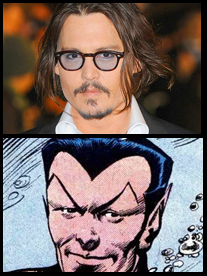 Did you ever wonder who might be Johnny Depp’s favorite super-hero? Probably not, but I’ll bet you can figure it out.
Did you ever wonder who might be Johnny Depp’s favorite super-hero? Probably not, but I’ll bet you can figure it out.
Yep. You guessed it. Johnny Depp’s favorite super-hero is Prince Namor, the Sub-Mariner. Of course, Namor isn’t quite a super-hero, having been bridging the gap between hero and menace for 71 years. Which is why I’m not surprised he’s Depp’s favorite.
Now, let’s not go nuts here. Depp is not suggesting he’s going to play Namor in the Avengers movie or some other place, and he’s not even suggesting wants to play the part. Right now he’s in the middle of at least four movies, including the fourth Pirates of the Caribbean and the new Dark Shadows movie, where he plays Barnabas Collins.
Depp was a real Marvel Comics fan, showing preference for both Spider-Man and the Fantastic Four… although he didn’t care for Captain America, and this was long before we ever heard of Al Qaeda. Depp also liked Sgt. Rock. Depp told Hero Complex “The Sub-Mariner was the alternative one. The alt-superhero. He was the sort of Bohemian comic book. I like that.”
I know I said there was no movie involved, but if Depp were to give Subbie a go, maybe they could get Joaquin Phoenix to play the Human Torch.
Related articles
- Johnny Depp: My favorite comic book character is… (herocomplex.latimes.com)
Doctor Who’s Nicholas Courtney: 1929-2011
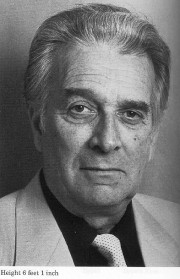 You may have heard that actor and author Nicholas Courtney died this past Monday. I’d like to add a personal note.
You may have heard that actor and author Nicholas Courtney died this past Monday. I’d like to add a personal note.
First, some background. Nicholas Courtney was best known for playing the part of Brigadier General Alistair Lethbridge-Stewart on the Doctor Who teevee series, as well as many of the original full-cast audio adventures and, in 2008, on the spin-off show Sarah Jane Adventures. He performed with at least eight of the eleven doctors, and had worked on stage and on such famous British shows as The Saint, The Avengers, Yes Prime Minister and The Champions.
I first met Nick at a Doctor Who convention in Chicago nearly 30 years ago. I was one of the organizers, and while we were waiting for our panel on the first day I asked him if he had ever done any radio drama. Given his rich, authoritative voice, I thought he was a natural and I knew radio drama was still alive and well in Great Britain. Nick lit up like a Christmas tree and said he did it, and does it, as often as he could. He absolutely loved the medium.
We became friends and stayed in touch for about fifteen years. When he returned to the role of the Brigadier in the original audio shows, he was very excited and very happy to share. Nick said I was one of the few who would understand his enthusiasm, and that really meant a lot to me.
Overall, Nicholas Courtney played the role for 40 years with only a comparatively brief time off in the middle. That’s really something. During his tenure, ten different actors played the lead along with countless companions and villains, and he outlasted them all. That’s what makes a legend.
I’m really going to miss the unflappable Brigadier General Alistair Lethbridge-Stewart, and I’m going to miss the sweet, affable storyteller named Nicholas Courtney even more.
ANOTHER GUEST REVIEW THIS WEEK-HALEGUA LOOKS AT PLEXICO’S SENTINELS!
Review of Sentinels Vols. 1-3
by Mark S. Halegua
Intrigue, humor, paranormal humans, aliens, androids, paranormal aliens, robots, mystery, amnesia, other planets, other galaxies, other dimensions, betrayal, cosmic villains, and battles, battles, battles.
All of these are in Van Allen Plexico’s first trilogy of the Sentinels.
From the first book through the third in this trilogy I was enthralled. I had a hard time putting them down and after each ended I wanted to read more.
From the beginning this read very much like a Jim Starlin cosmic tale, with mostly earth bound super heroes facing off against villains, robots, and groups with multi-dimensional/universal goals of conquest and galactic power and abilities.
There’s no doubt Marvel comics and the Avengers were a large influence for the Sentinels, who are, or will, come together as a super-team on Earth. Its nascent members include a powerful, government authorized powerhouse, Ultraa, with a mysterious past – even to himself; a paranormal teenager with the power, more than even she knows, over electro-magnetic forces; a billionaire inventor with aspirations of wearing the armor he’s designing instead of giving it to the double agent the government has selected; a robot/android over 1,000 years old with memory issues – who is himself an agent of a galactic entity wanting the resources of the planet; an alien woman finding herself a slave then holder of unexpected powers and also an agent of yet another civilization which may be inimical to Earth; a man who allows an otherworldly material to attach to him symbiotically; and more.
The first three books of the series are titled “When Strikes the Warlord,” “A Distant Star,” and “Apocalypse Rising.” Each one raises the stakes and the threat to Earth, and each one adds a potential new member to the team taking shape.
The only issue I have with the books is the pace. It’s like riding a roller-coaster that never slows down, only going faster as it moves up down and around the track. Its pace is such the reader almost has no chance to breathe, and neither do the heroes.
Van Allen Plexico has created a world of continuing and mounting danger, of interesting people, and never-slowing-down action. I enjoyed them and still want more.
But first, a little time to breathe.
ALL PULP interviews Long Time Comic Fan Turns to Pulps BILL GLADMAN
BILL GLADMAN-Writer/Artist
Bill Gladman, a writer/artist has been involved with comics most of his life. He recently helped form a local comics studio, Twilight Star Productions and last year they released twelve titles in their first year. Bill also ventured into the world of pulps for the first time ever when he contributed a story to RAVENWOOD – Stepson of Mystery from Airship 27 Productions. We caught up with this fellow in his home town of Springfield, Ohio and sat down to talk about his new pulp writing career.
AP – Bill, thanks for joining us today. Give us a short bio of yourself, age, where you were born, schooling, family etc.
BG –Born in Marysville, Ohio. About a half hour drive north of Springfield. In true dynamic fashion. In a middle of a thunderstorm, two minutes before midnight July 25th 1967, making me 44 years old this summer.
As far as schooling goes it seems I’ve learned all the important stuff by accident. I did graduate from Springfield North High School in 1985. I also went to Springfield Joint Vocational School during my junior and senior years of high school where I studied commercial art and girls. Unfortunately I didn’t get a certificate in art because I missed way too many days my senior year. I was sure the garage band I was in at the time was going to be world famous in six months and rock stars were too cool to go to school, right?
Currently married to my second wife and love of my life 13 years this April….between us and our previous marriages we have four kids and five grand kids.
AP – How old were you when you first became a comic book fan. What was the attraction?
BG – I was seven years old. My grandmother bought me a copy of Avengers #145 at the gift shop at one of the local hospitals. We were visiting my grandfather who had suffered the first of many strokes that would eventually claim his life a few years later and she wanted to keep my mind off things at the time so she bought me that comic. It all started then and there, so my grandmother gets all the credit, or blame. Depends on how you look at it I guess.
AP – Marvel or DC? Who was your favorite comic book superhero and why?
BG –Captain America. He’s the guy for me…..guess he always has been. He played a large role in that first Avengers story and although over the years when asked this question I may have said something along the lines of Daredevil or Batman, maybe even Dr. Strange…truthfully I guess it would really have to be Cap. The amount of Captain America comics in my collection would seem to only cement that train of thought.
AP – How did you come to write a Ravenwood story? Had you ever heard of the character before?
BG – I never heard of the character at all. I ran across a post on the Comic Related website made by Ron Fortier in which he was attempting to recruit fresh blood to write pulp stories for Airship 27. I’d never wrote a pulp story before, and never really read any either but I thought it would be a nice creative challenge so I e-mailed Ron to let him know I was interested. He sent me a list of characters that was available and that Airship 27 was interested in publishing stories about. Ravenwood was one of about three characters that seemed to appeal to me and the ball got rolling from there.
AP – What’s the name of your story in the Ravenwood collection? What appealed to you about this particular pulp hero?
BG –“When Death Calls”. After I received more background information about Ravenwood I felt there were elements of Dr. Strange, Bruce Wayne (both personas of that character), and Tony Stark (Iron Man) in the Ravenwood character. That allowed me to have a safety net of sorts. Plus there was just enough background info to get me interested in the character but I wasn’t smothered with details. There was a lot of room for me to breath as writer with this character.
AP – Was writing pulp easier or harder than your comics work? Elaborate, please.
BG –It was actually easier for me. It was exciting, new, and fresh. It was a great experience for me. I’m a big history buff as well so I enjoyed the research aspects of the story as well….what was the most popular film of 1938…how much did a pack of cigarettes cost 73 years ago. That type of thing. And I’m a very wordy writer. This story allowed me to express myself in a way that writing comics do not. I get grief from the artists I work with all the time about the amount of dialog in my stories. And in the end I still went over the word count for the story requirement. Go figure. Needles to say a good portion of it ended up on the editing floor.
AP – There seems to be a real renaissance of pulps today in both prose, comics and movies. Why do you think that is?
BG –I think it’s a couple of things, and this is just the opinion of some hack in Ohio so bare with me.
I think that pulps in prose and comic formats and hopefully film caters to the mature reading audience that actually collect comics and go to the movies. They’re action packed, entertaining, suspenseful, and fun. Mature doesn’t have to mean sex and violence. Mature can mean, wow that story made me think and I liked that.
Also I think the escape level in the pulp stuff is higher than your super-hero comics or horror comics. The time period that these stories take part in for the most part was less complicated and negative. At the same time the fiction is a little more realistic. I mean nobody is finding a baby from another planet in a rocket ship in a Ravenwood story.
AP – Will you ever do another Ravenwood story?
BG –Oh yeah. I loved working with this character and the cast of characters involved with this story. I already have ideas for a second and a third story.
AP – Is there any other pulp character you’d like to write some day?
BG –Possibly. I’m quite content writing Ravenwood for now but one of the other choices that appealed to me at first was Moon Man. He sounded like a fun character to write.
AP – Finally, what’s on the horizon for Bill Gladman and Twilight Star Productions?
BG –At times there’s so much stuff going on at Twilight Star Studios I can’t see the horizon! Seriously this studio has been very productive and although I have been involved in several different studios in the past there has not been an experience like this. One a personal note I’ll be involved with several of our books including Tales From The ‘Field which is our flag ship title and an anthology comic. I usually write short stories and even sometimes ink other short stories for this title. I write short stories for our horror anthology series Pandemonium Spotlight, write and draw Prodigy an on-going cosmic super hero tale, write and draw Jack the Rabbit an action/adventure/fantasy limited series. I also write and ink the Un-Naturals and recently co-wrote Hero Of The Day featuring the character Hero Montgomery created by a good friend of mine (Chad Strohl) as well as act as Executive Editor on all of our books. I also plan to re-release my first novel The Book Of Noheim through the studio. More novels will follow.
I also write two weekly web comics for the Comic Related web site (New Comic Day and Price For The Asking-with Ron Fortier) there is a third web comic about to launch on that site as well (The Bumtastic Four) I can also be found every other Monday co-hosting the RaynMan Power Podcast on that same site with Frank Raynor.
I have comic projects in the work with Penny Dreadful Press and Studio Akumakaze and a few other bigger companies which I’m not “allowed” to talk about at the moment.
AP – This has been fun and informative, Bill. Thanks and good luck with all your many projects.
BG –Thank you! It was a blast!!! Hope I didn’t bore you to death!!!
Joe Staton To Take Over Dick Tracy
 Long-time Dick Tracy aficionado Joe Staton will be taking the classic Dick Tracy newspaper strip following the retirement of long-time artist Dick Locher after March 13.
Long-time Dick Tracy aficionado Joe Staton will be taking the classic Dick Tracy newspaper strip following the retirement of long-time artist Dick Locher after March 13.
That’s the right man for the job. Of course, this writer made that suggestion to the newspaper syndicate 27 years ago. Joe should be admired for his patience as well as his craft.
Staton is well-known for his work on such comics characters as Superman, Spider-Man, E-Man, Green Lantern, the Justice Society, The Avengers, The Hulk, The Huntress, Scooby-Doo, Plastic Man … well, you get the point.
What this means is, unlike Brenda Starr and Little Orphan Annie, Tribune Media Services is not canceling Dick Tracy – contrary to rumor.
Joe will be joined by writer Mike Curtis.
Marvel Boosts Disney TV Ratings To All Time High
 Here’s yet more tangible proof that the Disney/Marvel merger was a good thing from a money-making POV: with help from various Marvel properties such as The Avengers: Earth’s Mightiest Heroes, Fantastic Four, The Incredible Hulk, Iron Man, Silver Surfer, Spider-Man, X-Men, and X-Men Evolution, 2010 became Disney XD’s most watched year ever (including as Toon Disney) in Total Day and Primetime with Total Viewers and kid demos.
Here’s yet more tangible proof that the Disney/Marvel merger was a good thing from a money-making POV: with help from various Marvel properties such as The Avengers: Earth’s Mightiest Heroes, Fantastic Four, The Incredible Hulk, Iron Man, Silver Surfer, Spider-Man, X-Men, and X-Men Evolution, 2010 became Disney XD’s most watched year ever (including as Toon Disney) in Total Day and Primetime with Total Viewers and kid demos.
In Total Day the network hit all time highs with Total Viewers (270,000) and K6-11 (107,000) and Boys 6-11 (69,000), the latter two demos up +14% and +17% respectively.
In Primetime Disney XD set records in Total Viewers (325,000) and among K6-11 (136,000) and Boys 6-11 (89,000), the latter two demos up by +21% and +24%, as well as with Tweens 9-14 (105,000) and Boys 9-14 (71,000), increasing by +28% and +29% respectively.
These were exactly the demographics that Disney was purported to be targeting, and it looks like they got them. In addition, of course, Disney saves lots of money by not paying outside licenses.
2010 was also the Disney Channel’s most-watched year in its history in Total
Day (6a-6a) with Total Viewers (1.72 million) and K6-11 (623,000) and
Tweens 9-14 (533,000). Disney Channel was also the top TV network in
2010 in Total Day with Tweens 9-14. In primetime for 2010, the network
was tops with K6-11 (1.06 million) and Tweens 9-14 (878,000).
Makes you wonder what will ever happen with DC and Cartoon Network, doesn’t it?







